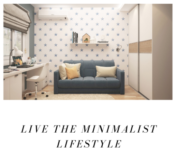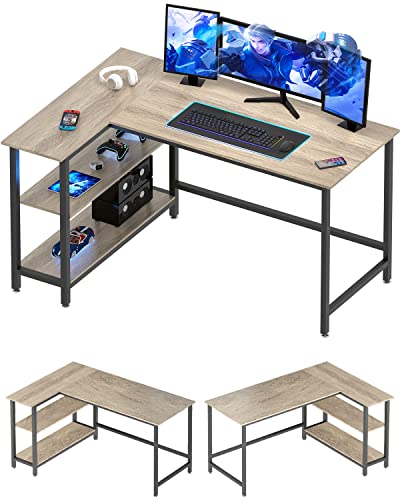In this step-by-step guide, I will show you how to transform your functional furniture into a captivating focal point in any room of your home. By following these simple instructions, you will be able to create a visually appealing and practical space that truly stands out.
Table of Contents
Popular Functional Furniture Choices



Assess the room layout
To assess the room layout, start by examining the size, shape, and existing furniture placement. This will give you a clear understanding of the space you have to work with. Next, determine the best area to place the furniture to create a focal point with maximum impact. Consider the flow of the room and how the furniture will function within the space. By carefully evaluating the room layout, you can ensure that your furniture arrangement enhances the overall design and functionality of the room.



Choose a statement furniture piece
Choose a functional furniture piece that will serve as the focal point of the room. Select a unique sofa, an eye-catching bookshelf, a stylish dining table, or any other furniture item that aligns with your personal style and the overall theme of the room. Ensure that the chosen furniture piece stands out and creates a statement in the space.
Consider color and texture
Consider the color scheme and texture of the room when selecting a furniture piece. Look for a piece that complements the existing colors and textures or adds an interesting contrast. For example, if the room has a neutral color palette with smooth surfaces, you may choose a bold-colored or textured furniture piece to create a striking focal point. On the other hand, if the room already has vibrant colors and patterns, a furniture piece with a more subtle color and texture can provide balance and harmony. By considering color and texture, you can ensure that your furniture piece stands out and enhances the overall aesthetic of the room.



Arrange furniture around the focal point
To arrange the remaining furniture in the room around the focal point, follow these steps:
- Identify the focal point: Determine the main feature or area in the room that you want to draw attention to. It could be a fireplace, a large window with a scenic view, or a statement piece of furniture.
- Create balance: Position the larger pieces of furniture in the room first. Place them in a way that complements the focal point and maintains a visually balanced arrangement. For example, if your focal point is a fireplace, you could place a sofa directly facing it and two armchairs on either side.
- Consider traffic flow: Ensure that the furniture arrangement allows for easy movement around the room. Leave enough space between pieces so that people can walk around comfortably without feeling cramped.
- Add supporting furniture: Place smaller furniture pieces, such as side tables, coffee tables, or ottomans, strategically around the room. These pieces should enhance the presence of the focal point without overpowering it. For example, you could place a coffee table in front of the sofa, creating a functional and visually pleasing arrangement.
- Pay attention to proportion: Ensure that the size of the furniture is proportional to the room and the focal point. Oversized furniture may overpower the space, while undersized pieces may get lost. Aim for a harmonious and proportional composition.
- Consider angles: Experiment with different angles and orientations to find the most visually appealing arrangement. Sometimes angling a piece of furniture slightly can create an interesting focal point and add depth to the room.
Remember, the objective is to create a harmonious and visually balanced arrangement that highlights the focal point while providing a comfortable and functional living space.
Create visual contrast
To create visual contrast and make your functional furniture stand out, try incorporating elements in the surrounding decor that complement and highlight its features. One way to achieve this is by using contrasting colors. For example, if your furniture is in a neutral color, consider adding accent pillows or a rug in a vibrant hue to create a striking contrast. Another option is to play with patterns. If your furniture has a simple design, try incorporating patterned curtains or artwork to add visual interest. Lastly, consider using different textures. Pairing a smooth, glossy surface with a rough, textured fabric can create an eye-catching contrast. Experiment with these ideas to enhance the visual impact of your functional furniture.



Add lighting
Illuminate the focal point with appropriate lighting. Use accent lighting, such as spotlights or wall sconces, to draw attention to the furniture piece. Ensure that the lighting enhances the overall ambiance of the room while highlighting the focal point effectively.
To achieve this, position a spotlight above the focal point, angled towards it. This will create a dramatic effect and draw immediate attention. Alternatively, install wall sconces on either side of the furniture piece, directing the light towards it. This will provide a softer and more subtle illumination. Experiment with different wattages and color temperatures to find the perfect balance that suits the room’s atmosphere. Remember to consider the size and scale of the focal point when choosing the appropriate lighting fixtures.
Accessorize strategically
To accessorize the room strategically, start by adding decorative items that enhance the focal point. Select accessories that complement the style and theme of the functional furniture piece. Consider including artwork, decorative pillows, rugs, or other items that add visual interest without overpowering the focal point.
Maintain balance and functionality
Choose furniture pieces that serve a purpose and complement the overall aesthetic of the room. Arrange them in a way that promotes easy movement and accessibility, ensuring they do not obstruct pathways or impede functionality. Regularly assess the placement and functionality of the furniture to make adjustments as needed, maintaining a balance between functionality and visual appeal.
Regularly update and refresh
To maintain the functional furniture as the focal point in your room, regularly update and refresh the surrounding decor. Start by swapping out accessories such as throw pillows, curtains, or rugs to add a new pop of color or texture. Rearrange the furniture layout to create a fresh perspective and improve the flow of the room. Finally, introduce new elements like artwork, plants, or decorative accents that complement the focal point and reflect your evolving style. Remember to have fun and experiment with different combinations until you achieve the desired look and feel.
Key Takeaways
In conclusion, making functional furniture a focal point in a room is a simple yet effective way to enhance the overall aesthetic and functionality of your space. By carefully selecting statement furniture pieces, considering the room layout, and incorporating complementary elements, you can create a visually appealing and functional area. It is important to regularly update and maintain your focal point to ensure its longevity and continued engagement. By following these steps, you can successfully transform your furniture into a captivating focal point that will impress any visitor.
Enhancing Room Décor
Instructions for Utilizing Functional Furniture
- Start by identifying your needs and the functionality you require from your furniture. Consider factors like storage, multi-purpose use, or space-saving features
- Research and select functional furniture pieces that cater to your specific requirements. Look for items like convertible sofas, storage ottomans, or dining tables with built-in extensions
- Prioritize quality and durability when purchasing functional furniture. It should be able to withstand regular use and provide long-term value
- Take measurements of your space to ensure that the functional furniture fits properly and doesn’t overcrowd the room. Consider the dimensions when choosing items like folding chairs or nesting tables
- Experiment with different configurations and arrangements to maximize the functionality of your furniture. For example, a modular bookshelf can be adjusted to create additional storage or serve as a room divider
- Lastly, be creative and have fun with your functional furniture! Explore different ways to use the furniture to its fullest potential and adapt it to your changing needs over time
Frequently Asked Questions about Functional Furniture
What are some innovative designs or features found in functional furniture?
There are several innovative designs and features found in functional furniture that can greatly enhance our living spaces. One such feature is the incorporation of hidden storage compartments. Many furniture pieces now come with hidden drawers, shelves, or compartments that allow us to maximize storage space without compromising on aesthetics.
Another innovative design is the concept of modular furniture. Modular furniture consists of individual units that can be easily rearranged or combined to create different configurations. This allows for versatility and adaptability in our living spaces, as we can customize the furniture arrangement according to our needs and preferences.
Additionally, there has been a rise in the use of multi-functional furniture. These are pieces that serve multiple purposes, such as a sofa that can be transformed into a bed or a coffee table with built-in storage and seating. This type of furniture is particularly useful in smaller spaces where maximizing functionality is crucial.
Furthermore, the integration of technology into furniture design has become increasingly common. For example, there are now desks or tables that come with built-in charging stations for electronic devices or adjustable height features for ergonomic purposes. These technological additions enhance the functionality and convenience of the furniture.
In summary, some innovative designs and features found in functional furniture include hidden storage compartments, modular designs, multi-functionality, and integration of technology. These advancements not only improve the utility of furniture but also contribute to creating more efficient and adaptable living spaces.

